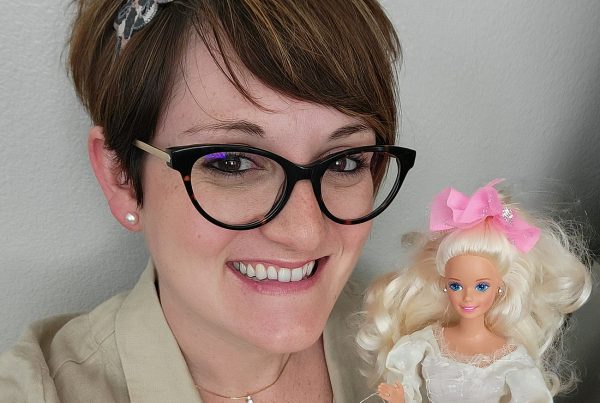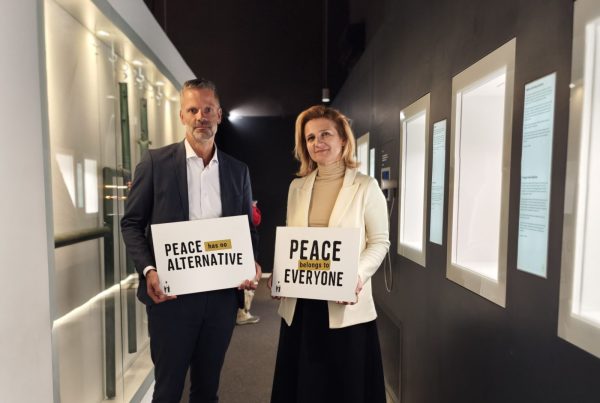The War Childhood Museum’s collection is built on the voices and experiences of individuals who have shared their personal stories and objects. Through a series of interviews with collection contributors, we explore what the Museum means to them and what motivated them to record their testimony or donate an object.
Mirela Geko was one of the first people to record a video testimony for the Museum. She shared a deeply emotional story of both loss and gain – story about losing a sister during the war but also gaining a brother. Beyond that, her connection to the Museum runs deep—she also worked as a project manager at the Museum for 2.5 years. A part of her testimony is currently on display at the Museum and is also being exhibited on Jeju Island in South Korea until the end of May this year.
Read the interview below.
How did you get involved with the Museum, and what led you to agree to record your testimony?
My connection to the Museum began when the question “What does childhood in war mean to you?” appeared online, which later became the foundation for the book Childhood in War. At that moment, I wrote my sentence, describing what war childhood meant to me—and that’s how my journey began.
From the book promotion to the invitation to contribute to the creation of the Museum, it was both an honor and a responsibility to be among the first to take part in its establishment. I accepted the invitation immediately, but soon realized that I didn’t have any personal objects from the war. There was only one doll—a keepsake from my sister—which I couldn’t part with. That’s when we decided to record a video testimony instead.
I agreed because I felt it was my responsibility to show how war affects children and their lives—how it shapes us as individuals, leaves scars, but if we survive, it gives us a voice that must fight against harmful social phenomena and behaviors.
How do you think your story can help children experiencing war and conflict today, and what are your hopes for their future?
I sincerely hope that my story can show that, despite immense loss and sacrifice in war, I also gained the best brother. I want both children and adults to understand that great losses don’t necessarily have to give rise to negative emotions or lead to destruction.
Loss made me stronger and awakened in me a desire to fight so that no five-year-old Mirela ever again loses her two-year-old Elma. Through my story and experience, I want adults to open their eyes and become aware of the innocent children who suffer.
And to the children, I wish that—even in the abnormal times of war and conflict—they can find small sparks of childhood and play. I hope they will grow up in a free country, without intolerance, and that they too will fight for a better society.
What do the War Childhood Museum and similar initiatives mean to you?
For me, the Museum is the most beautiful story to emerge from the hardest of times. Initiatives like this are crucial because they give children and young people a voice, allowing them to show their strength. Through diverse educational content, they provide valuable knowledge about respect, empathy, and understanding—everything essential for building a better society.
This interview was edited and condensed for clarity.





